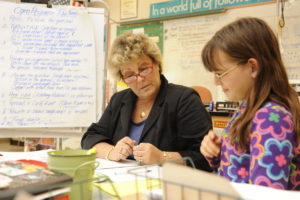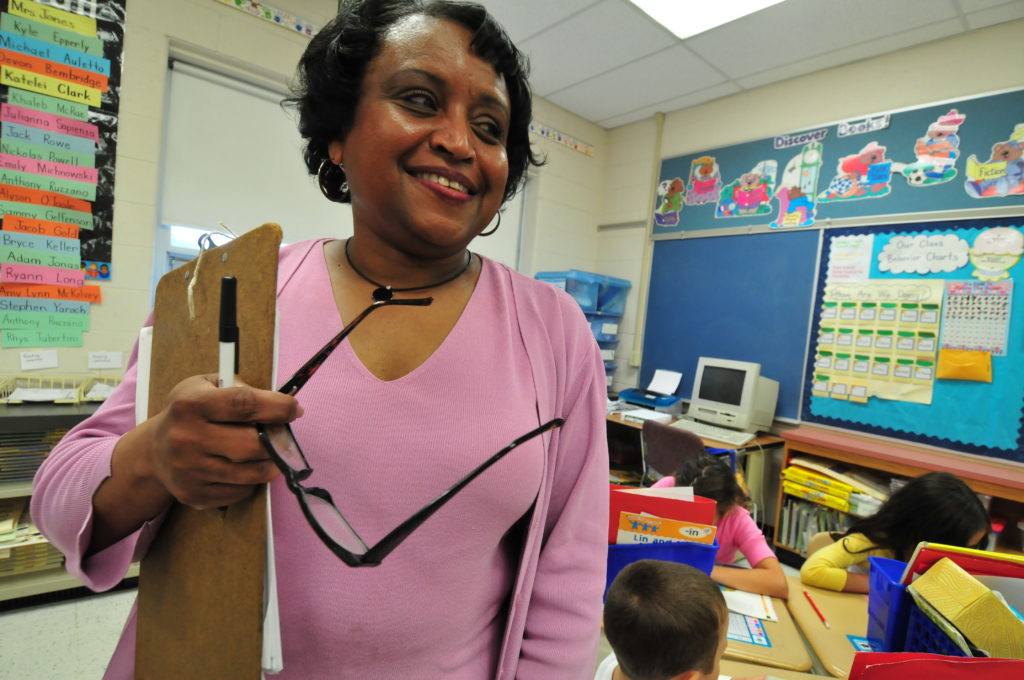Make the evaluation process work for you, and more importantly, for your students.
I left the advertising industry to become a teacher. The transition brought an intensive year of graduate school, student teaching and credentialing exams. In a very short time, I went from a luxurious office in Manhattan to a roomful of five-year-olds, just outside Philadelphia. Culture shock is a polite way of describing that change.
As I acclimated myself to the demands of teaching, friends and colleagues from my previous life in advertising would ask about my new job. When I explained that I was teaching kindergarten, the response was almost always the same: “Oh! You must be having so much fun!”
Well, yes, I enjoyed the work. But that’s not what they meant. In their minds, I was sitting on the floor with adorable kids, playing with building blocks, singing songs, and skipping home at 3:25 every afternoon. In reality, I was learning what experienced educators know very well: teaching is an unbelievably demanding job. It is physically exhausting. It is emotionally draining. And it’s incredibly challenging on an intellectual level.
My story uncovers a fundamental and crucial problem: those with limited experience in education have very little understanding of the complexity and demands faced by teachers and school leaders. In fact, many policymakers and public critics believe they know quite a lot about teaching simply because they once went to school. “How hard can it be?” they muse. Sadly, these are many of the same folks who have developed policies around teacher evaluation.
So, what exactly should you do? Take the following actions so that the evaluation system can be successfully implemented in a fair and productive manner.
1. Deeply understand the model
Everyone in the system needs to fully understand the evaluative criteria and rubrics that will be used. It is not uncommon for districts to focus training on supervisors or a handful of teachers who are expected to inform their colleagues. It is not sufficient to simply select a model (whether it is Danielson, Marshall, Marzano, etc.) and have an in-service day for all teachers and administrators to learn the model and the rubrics deeply enough to apply them in practice. Whether using Webb’s Depth of Knowledge or Bloom’s Taxonomy, applying concepts is a higher-level activity. It must be something all participants can make meaning with, and relate to, their complex work.
2. Learn about the role of student achievement
Student learning objectives (SLOs) should be one of the most teacher-driven aspects of the evaluation system. SLOs are meant to reflect the growth and performance of a specific group of students, based on their particular abilities and academic needs. It is inappropriate to set goals that are district, school, or even department-wide, since such goals would not reflect the needs of the students for whom a teacher is responsible.
Two important steps within the SLO process are assessment and developing baseline information. Assessments can include performance assessments, portfolio projects, problem-solving protocols, and teacher-based assessments. These should not be overlooked in favor of standardized or published assessments, particularly if those do not accurately reflect the curriculum being taught throughout the year. To develop baseline information and meaningful goals, gather a collection of information, including grades in past classes, assessments of prerequisite skills, scores on assessments in late September and October, some measure of student engagement including homework completion, class participation, and attendance might all be used to develop goals for a group of students. Best practice would indicate collecting data from multiple sources in order to set goals for students that are both ambitious and achievable.
3. Find your professional voice
 Teachers and school leaders deserve a system designed to foster greatness. This can only be accomplished with a collaborative effort to create systems of transparency and fairness. The purpose of teacher evaluation models is to provide common vocabulary and expectations that put a focus on high quality instruction— highlighting it when it’s observed and supporting it when it needs improvement.
Teachers and school leaders deserve a system designed to foster greatness. This can only be accomplished with a collaborative effort to create systems of transparency and fairness. The purpose of teacher evaluation models is to provide common vocabulary and expectations that put a focus on high quality instruction— highlighting it when it’s observed and supporting it when it needs improvement.
Teachers and school leaders must participate in dialogues for learning. This means that the data gathered during an observation or a teacher portfolio of behind-the-scenes work are opportunities to have meaningful conversations about teaching—and not just as fodder for a final “score.” Working together, we can make the evaluation process work for us, and more importantly, for our students.








